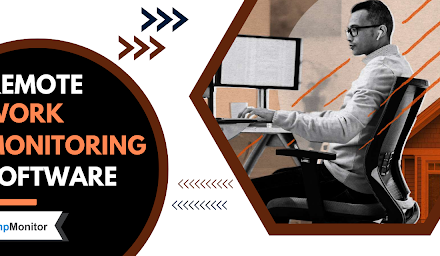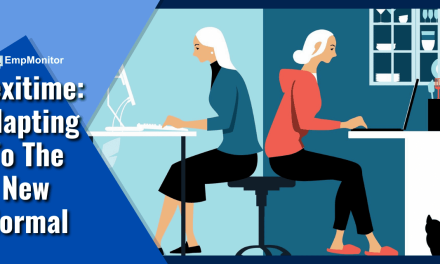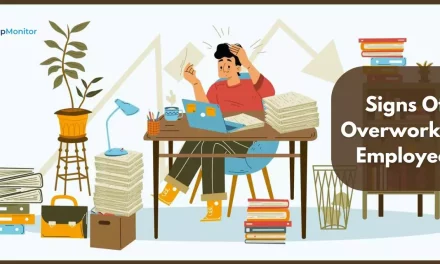Is it even a question if we need employee attendance tracking in the workplace? We are all aware of the distractions waiting for us in our newly opened tabs on Chrome (Duh!). Who wouldn’t check into their Insta account every 10 minutes when there seems to be zero vigilance in the working premises? (I would)
Technology is pacing faster than ever, paving ways to an array of options to keep a check on your co-workers. From attendance sheets and login mails to employee attendance tracking software, it seems almost impossible to make a choice.
Keeping all this in mind, we have come up with a detailed overview of some of the most common methods to monitor employees. But before beginning with anything, let’s discuss the importance of attendance tracking and all the things that you need to keep in mind while doing so.
Why Is Attendance Tracking Important?
I mean, we all know the answer to this question. But apart from the very obvious, here are two of the most compelling reasons why accurately tracking working hours is essential:
1. Regulating Working Hours
First of all, keeping a check on working hours is not just about regulating productivity. It’s also about a fair judgment of the employees who work comparatively harder. When you stop checking on the employees’ accurate working schedules, the ones who work just for the sake of working get the upper hand.
To ensure fair treatment of employees, fair compensation for working overtime, preventing goldbricking, etc. are some very prominent reasons why one should be regulating their employees’ working time.
2. Financial Losses
The mismatch between total hours recorded and total hours actually spent by employees on their assigned tasks is inevitable. However, when not paid attention, they may lead to massive financial loss. We can lately observe buddy punching becoming very common where an employee marks attendance on behalf of their absent or late colleague.
Apart from attendance fraud, data breaching is also a striking issue that a vast majority of Corporates face these days. A single data breach can potentially leak all the sensitive information of a company, and that is, assuredly, NOT something you would want.
Things To Consider
Your choice of attendance tracking depends largely on A LOT of things- the size and type of your company, your budget, number of remote employees, etc.
Size: You probably won’t need very complex monitoring solutions if you own a company with up to 10 employees working right in front of you. On the other hand, you do need serious monitoring solutions for a corporation with 500+ employees working day in and day out.
Budget: Employee monitoring solutions range from maintaining free timesheets to investing in expensive biometric technology. Employee attendance tracking software is a reliable solution for corporates with a moderate budget and a significant number of workers.
Remote Employees: It is no brainer that you need to deploy monitoring tools and, sometimes, GPS, to track the employees working remotely. It is also beneficial when you frequently work with freelancers for your projects.
I guess now it is QUITE clear why and how to keep an eye on your employees’ attendance. Now let us take a closer look at some of the most common ways to track and monitor them.
Ways To Track Employees Attendance
Okay, I am not going to beat around the bush. Let’s get straight into it:
1. Manual
As I already stated above, you don’t need to track the office hours of your employees if you work with merely 10-15 of them. Solely keeping a record of their login and log out time and noting the late-comers will be enough.
However, manual records work only for small companies and startups. Once you start adding a few more employees and maybe some remote workers, things may get a bit more complicated. Here, you need to switch to automated tracking like the ones mentioned ahead.
2. Timesheets
Maintaining timesheets is inexpensive. They are tables with the names of all the employees, along with their login and logout updates. You can manage timesheets in Excel, Google docs, etc. Timesheets are free for everyone.
You can appoint an individual to record the login and log out updates on the employees’ behalf. This way, timesheets become more reliable in any organization. However, it can be very tedious to maintain it for a large number of employees and may lead to a lot of errors too.
On the contrary, You can also ask the employees to fill their respective columns themselves. But you cannot really be assured of the filled data in this case as the co-workers might forget to fill data sometimes, and can also enter wrong updates on purpose. Nevertheless, timesheets work well for a maximum of 50 employees in an organization.
3. Biometric Data
It is, by far, the most sophisticated way for employee attendance tracking. Biometric data readers include fingerprints, iris scanners, etc. It is notably reliable as the biometric details are unique to every individual. One cannot commit attendance fraud by any means in an office with it.
But even after being the most reliable, biometric is still the most expensive method of employee attendance tracking. High-resolution cameras and fingerprint resolution technology are not very affordable by startups. However, companies with 1000+ employees cannot afford to skip this step.
And oh, here are
7 Cybersecurity Tips For Your Staff Working Remotely
4. Keycards
Most of the medium and large companies use keycards. Employees clock-in their cards when entering and leaving the premises. This way, the system keeps an accurate database of their working hours. They come in various types- punch cards, swipe cards, proximity cards, RFID, QR Code scanners, etc.
Keycards are pretty intrusive, and so the employees generally don’t forget to punch-in. Plus, you also get an added security as no one can break in without a keycard. Employees don’t even need to take out their cards from their pockets in the case of RFID.
But here’s a thing, keycards lead to massive attendance fraud. Buddy-punching is very common in this case, and you don’t actually get to know the exact time when the employees started working on their systems this way. It’s sad. Pretty sad.
5. Time Tracking Software
Finally, let’s discuss the increasingly popular method of employee monitoring. There are various tools, apps, and software available in the market, like EmpMonitor, that can track and record every movement of your employees on their systems, even if they work remotely.
Employee attendance tracking software is pretty reliable and affordable as well. There are zero chances of buddy-punching, goldbricking, and data theft in this case. You get precise reports on what your employees are doing at any given hour.
EmpMonitor is one of the best tools in the market, and here are s+ome of its worth-mentioning features:
Auto-Screenshots: The software generates screenshots of deployed PCs and laptops in every 15 seconds. You can adjust the time interval accordingly, and store these screenshots in the cloud backup for about 90 days for each employee.
Stealth Mode: EmpMonitor does not appear on the taskbar or the search history. It means that you can passively monitor any employee you want, they won’t be aware of it.
Most Visited Websites: You get a list of the most used apps and the most visited websites with this tool. So you get to know what distracts and disturbs them and avoid any potential threat to the official data.
IP Whitelisting: The employer can whitelist the IP of any team leader. They can also deploy any individual to look for reports of their team and monitor the tasks performed by them in real-time.
6. GPS
Even though this method of monitoring is rare, it is especially useful in the case of remote or field workers. You can use this method to know the whereabouts of your delivery workers, salesmen, door-to-door merchants, etc.
However, this option also comes with a limitation- privacy issues. You can track GPS only on a person’s corporate phone and not on their personal one. It usually works for field workers, but not for the ones who might leave their corporate phones in the office. Plus, this method also has a tremendous chance of attendance fraud.
Btw, do you know
How To Increase Team Potential Through Workforce Productivity Analytics?
7. Combination of Methods
As you might have figured out already, you cannot really rely on one single employee attendance tracking method; you need to combine some of them to get the best results.
For instance, some companies may use biometrics to record the user logs, and then use employee tracking software on the systems to record their working and non-working hours. Many corporations also use keycards just for access, and not for logging in and out.
If you are a small corporation, you can use timesheets along with manual records of every data, but use employee monitoring tools to track what your co-workers do in real-time.
Which One’s The Best?
As far as summarizing all the solutions we have talked about, here’s a brief of some important aspects that will let you decide the combination of methods that you can use for your office:
Accuracy: Automated processes are the most accurate- keycards, biometric recorders, employee attendance tracking software, etc. They are also error-free.
Access: Biometrics and keycards are the best options if you want your attendance tracking method to be a mode for accessing the premises.
Reports: If you want to generate reports for the tasks that everyone performs and regulate client work, employee monitoring software is your only answer.
Cost: The least to most expensive scale goes this way- manual, timesheets, GPS, attendance tracking tools, keycards, biometrics. You can choose the options accordingly.
Reliability: Work time tracker and biometric attendance will make sure that there remains no attendance fraud or financial losses in your corporation.
Automation: If you want to avoid efforts and automate every tracking activity, the best option is to track attendance by monitoring software, biometrics, and using keycards.
Also Read,
9 Scientifically Proven Work-From-Home Tips That Will Boost Your Productivity
Best 05 Ways To Prevent Employee Fraud In Your Organization
Understanding Telecommuting: 15 Productive Things To Do When Working From Home This Quarantine
How To Craft An Effective Employee Attendance Write Up?
Get Ready To Track Your Employees
Tracking employees is something you cannot miss, especially with the ever-evolving workforce expanding its wings to remote workers. I Hope my compilation of the various methods gave you a solid idea of it, and now you can look for the best option for your corporation.
Was this article helpful? Did you implement any of the tracking methods mentioned above? Do you have any queries? Do not forget to list them in the comments below. I would love to hear from you!





